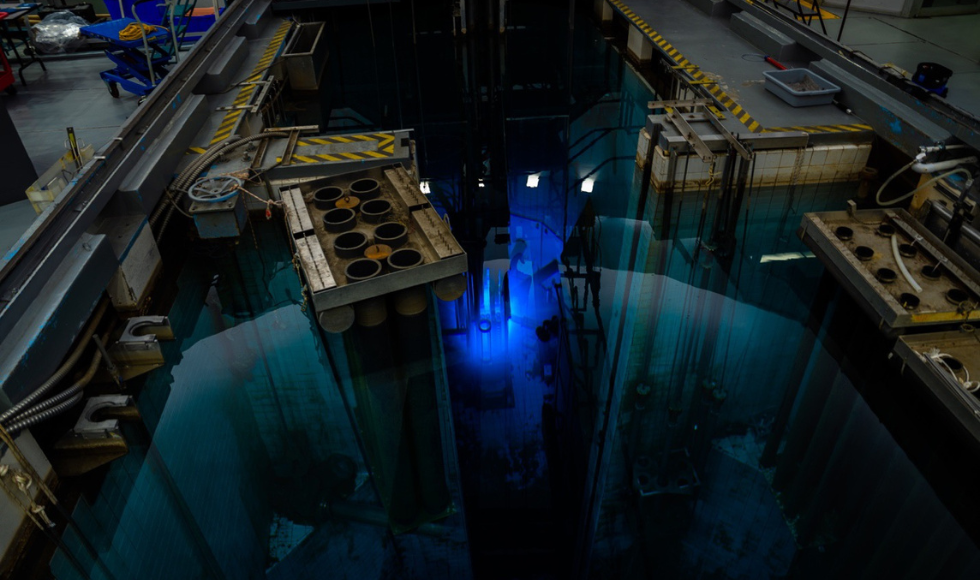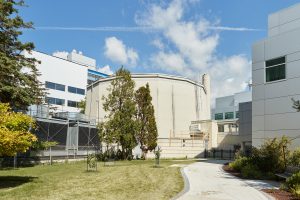Marvels at Mac: The past meets the present at the McMaster Nuclear Reactor

The McMaster Nuclear Reactor (MNR) generates neutrons to support research in materials science, clean energy and health and medicine. It has an “open pool” design that gives researchers easy access to the reactor core. (Photo by Kayla Da Silva/McMaster University).
Marvels at Mac follows a student’s point of view, exploring campus and uncovering some of the super-cool places that students might not know about.

Did you know that McMaster has a nuclear reactor on campus? You’ll want to check out this marvel at Mac.
Located behind John Hodgins Engineering (JHE) Building and Burke Science Building (BSB), the McMaster Nuclear Reactor (MNR) generates neutrons to support research in materials science, health and medicine, and clean energy. McMaster’s reactor is one of the top five university-based research reactors in the world.
The MNR became operational in 1959 and was the first university-based research reactor in the British Commonwealth. The reactor was designed to maximize access to its neutrons: it has an “open pool” design that gives researchers easy access to the reactor core. With over a dozen sample positions within the reactor core, six neutron beam instrument stations, and three pneumatic sample lines, the McMaster Nuclear Reactor can support more than two dozen experiments at any time.
Today, the reactor supports a community of some 250 users who are drawn from universities, national laboratories, and private sector companies across Canada and around the world. Research at MNR spans everything from agriculture to satellite technology, ecology to radiopharmaceuticals, and nuclear energy to geoarchaeology.
The reactor plays an important role in the lives of Canadians. McMaster’s reactor is one of the world’s largest producers of medical isotopes and produces cancer treatments for more than 70,000 patients every year. Neutrons at the reactor are also used for quality testing of aircraft components, and to conduct soil and environmental analyses for the energy and natural resource sectors.
Students at McMaster have a unique opportunity to get hands-on learning experiences at this nuclear facility, either through summer jobs and co-op placements, or as part of undergraduate laboratory curricula in Science and Engineering.

When you visit the reactor, one of the first things you’ll notice is the bright blue glow of the reactor core. This beautiful colour is due to a phenomenon known as Cherenkov radiation, which is seen when fast-moving particles are travelling through water faster than light moves through the water. Cherenkov radiation is easy to see at MNR because of the reactor’s open-pool design.
Fun Fact: In 1994, Bertram Brockhouse, a McMaster professor, won the Nobel Prize for his research on neutron scattering. Brockhouse created a neutron spectrometer that revolutionized materials research and is still being used today at neutron scattering centers worldwide.
P.S. The two metal silver towers beside the reactor building aren’t mysterious. Turns out they are cooling towers that remove heat from the reactor pool and release the heat as water vapour into the atmosphere. I apologize if you thought they were something cooler than that — no pun intended.
If you want to visit the reactor, they are open for tours Monday to Friday from 9 a.m. to 4:30 p.m. It is an experience you won’t regret!
To book a tour call: 905-525-9140 ext. 24279 or email MNRTOURS@McMaster.ca


